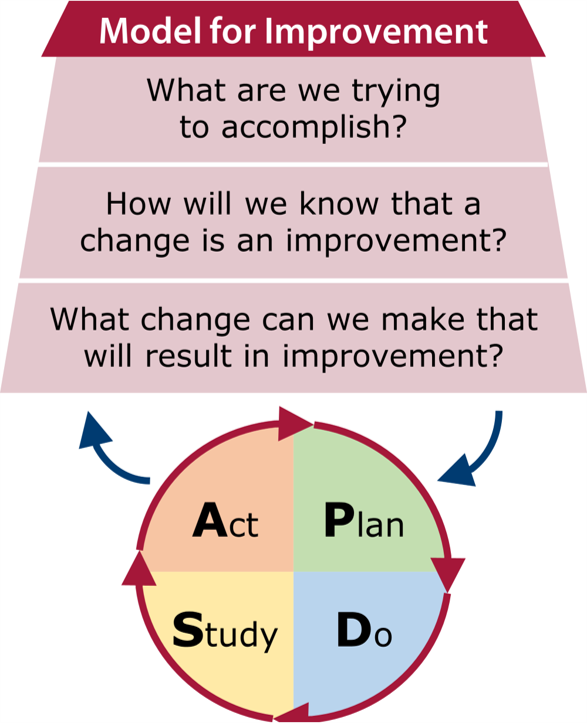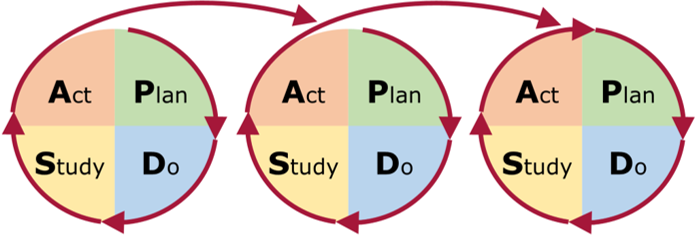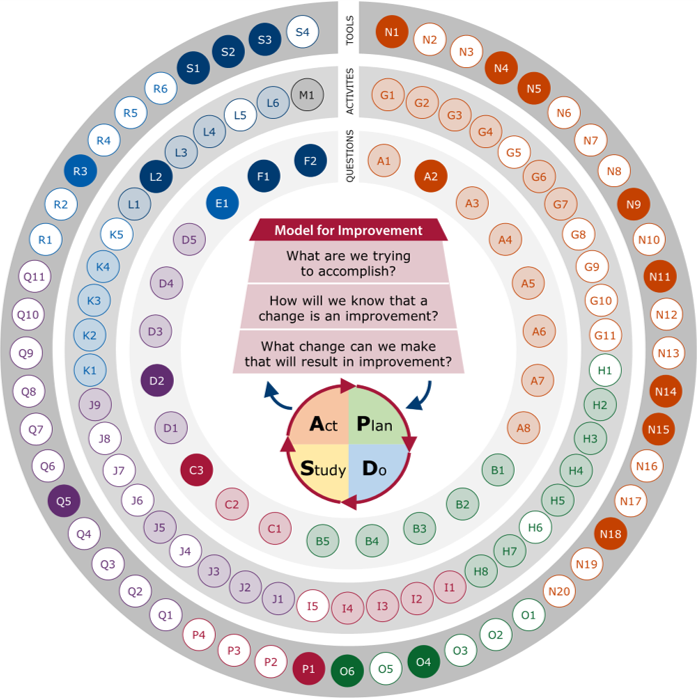The IHI Model is a tool for accelerating improvement, based on three fundamental questions and the Plan-Do-Study-Act cycle to test changes in real work settings.
Contents
Introduction
The model for improvement was developed by the Associates in Process Improvement as a tool for accelerating improvement and has been adopted by the Institute of Healthcare Improvement as its primary framework for improvement in healthcare. The model has two parts: three fundamental questions, which can be addressed in any order; and the Plan-Do-Study-Act cycle to test changes in real work settings in order to determine if the change is an improvement.
Use of the model is widespread within the NHS due to its simplicity and ability to bring about rapid testing of ideas. Some criticism of its effectiveness has been raised, suggesting that it is poorly applied and often pursued through time-limited, small-scale projects, led by professionals who may lack the expertise, power or resources to instigate the changes required.
The model for improvement ensures that teams know the purpose behind what they are trying to accomplish, understand what success will look like and identify those changes that will result in improvement. It also guides them through the process of establishing appropriate measures, creating changes, evaluating changes, implementing changes and spreading changes. Following the initial questions, multiple Plan-Do-Study-Act cycles may be used to achieve the level of improvement desired.
Getting Started
What are we trying to accomplish?
The focus of the first question in the IHI Model of Improvement is the agreement of a SMART aim statement that is meaningful to the users and stakeholders, and aligned with organisational goals. General project issues are also addressed at this stage, such as creation of the team, initial exploration of the problem area and needs, definition of a clear scope for the improvement, and engagement of key stakeholders.
How will we know that a change is an improvement?
The second question relates to the identification and definition of appropriate measures to test ideas for improvement. These may include outcome, process and balancing measures, proposed by the stakeholders, to ensure the agreed improvement aim is met.
What change can we make that will result in improvement?
The third question addresses the development of change ideas, in response to users’ and stakeholders’ needs and the agreed aim and measures. The use of creative thinking and exploration, along with the visualisation of current processes and evidence, are proposed as a means to stimulate ideation, concept development and selection.
Plan-Do-Study-Act
Plan-Do-Study-Act (PDSA) initially focuses on testing the proposed changes at limited scale to reduce risk, and then on learning from subsequent cycles to inform the scale-up of the changes. Hence, PDSA cycles also relate to second question on measures, measurement and data, and to the third regarding the current system and processes.
Comparison
The questions, activities and tools from this toolkit can be mapped to the IHI Model for Improvement to better understand the relative coverage of the two approaches. Resource material for the IHI model has been analysed in detail to ascertain how it relates to the systems approach in this toolkit, both in terms of the mention of common topics and in terms of the provision of detailed descriptions or advice relating to the same topics.
Questions, activities and tools that have particular potential to add value to the IHI model:
Feedback
We would welcome your feedback on this page:
Privacy policy. If your feedback comments warrant follow-up communication, we will send you an email using the details you have provided. Feedback comments are anonymized and then stored on our file server
Read more about how we use your personal data. Any e-mails that are sent or received are stored on our mail server for up to 24 months.









